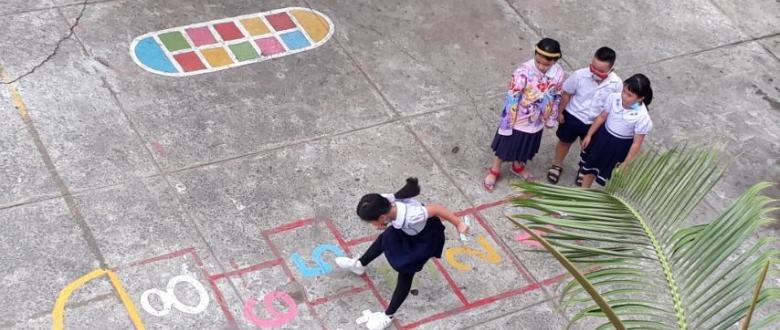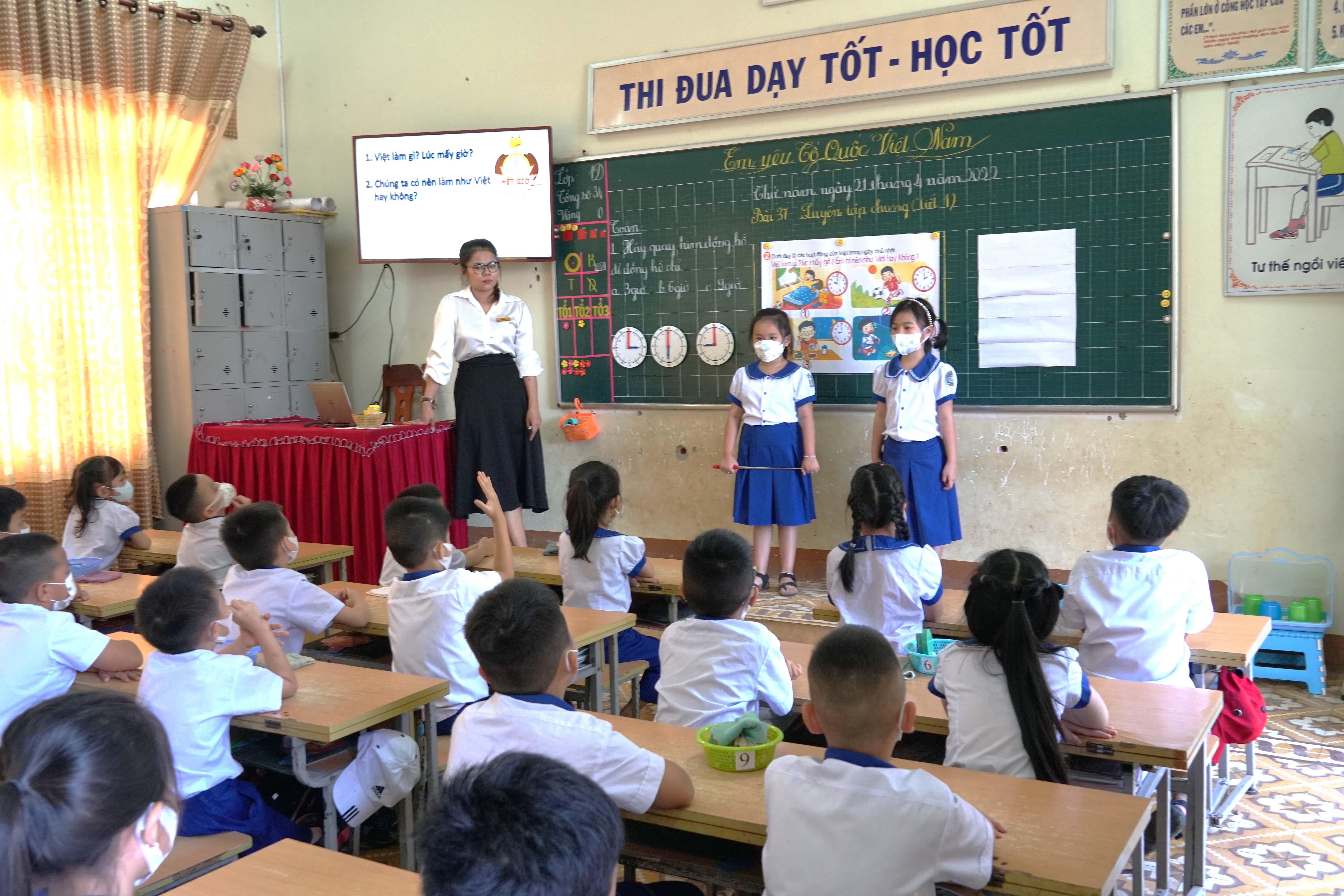
On May 28th, the world celebrates the power of play. For children, every day could be World Play Day, as Play comes so naturally to them. But adults may need a little help remembering that, and therefore World Play Day is an excellent opportunity to remind us about the benefits and the joy of playing.
Play has been said to be “the work of the child” (Maria Montessori), and it is “our brain’s favourite way of learning” (Diane Ackerman). There is plenty of research and evidence highlighting the positive impact Learning through Play has on children’s development. The most popular TED Talk of all time is an exposé by creativity expert Sir Ken Robinson, titled “Do schools kill creativity?”. His talk has been viewed over 73 million times now, as he makes the case for creating education systems that nurture creativity, rather than undermining it. Learning through Play does just that.
In Vietnam, VVOB is collaborating with the Ministry of Education and Training to implement Learning through Play at different levels of the education system. Recently, VVOB organized coaching trips with officials from the Bureau of Education and Training and the Department of Education and Training to several schools that are part of our pilot provinces in the iPLAY program. Here are three lessons learned from those trips, that can help teachers, school leaders and education officers to further improve their work with Learning through Play.

Third-grade students worked in group for a word tree assignment at a Literature class at Nguyen Tat Thanh Primary school, Quang Tri province. April 2022. Photo: VVOB/Pham Thu Thuy
- Learning through Play is a mindset
When we talk about Learning through Play, teachers, school leaders and education officers often ask how they should do that. It would be easy if we could share an exact procedure to stick to. But Learning through Play doesn’t work that way. There is no fixed recipe to follow. But there are common ingredients to work with.
Learning through Play is characterized by joyfulness, social interaction, meaningfulness, iteration, and active engagement. Student autonomy is another essential ingredient. When we start to cook with these ingredients, we can make an endless variety of delicious meals. That means, when teachers make lesson plans that show these characteristics, they can design and use an endless variety of playful techniques and methods.
- Play means more than playing games
Joyfulness is an important characteristic of Learning through Play. But that does not mean that all Learning through Play needs to be high-energy games with a lot of excitement. Learning through Play can also manifest itself in a simple communication technique (e.g. turn and talk), a thought-provoking structure (e.g. see-think-wonder), or a serious and very meaningful collaboration technique (e.g. jigsaw reading). Games are definitely fun and have their place in the classroom. True Learning through Play goes beyond the game format.
- Vietnamese teachers are eager to try
Whenever and wherever we visit schools, teachers and school leaders seem to embrace Learning through Play. They are eager to put it into practice and try out new techniques and ideas. It helps them to reach the goals of the new competency-based curriculum. It helps them to increase their professional standards. And, most notably, it helps the children to develop more holistically. Learning through Play still values the academic purpose of a school, but it also acknowledges the importance of social and emotional development, physical development, and creative development.

A lesson integrated Learning through Play in Lao Bao Number 2 Primary school in Quang Tri province.
April 2022. Photo: VVOB/Pham Thu Thuy
Play isn't another thing to do. It's another way to do things.
All that said and done, there is also one big worry seems to be shared by many teachers: “I don’t have enough time to apply Learning through Play.” Which is understandable. Schedules are busy and there are already so many things we have to do.
But as Sarah Bouchie, Chief Impact Officer at The LEGO Foundation voiced it well: Play isn’t another thing to do. It’s another way to do things. When applying Learning through Play, teachers shouldn’t feel as if they need to do more work. They can do the same things they have been doing, but do it in another, more playful way. Not only will it be more enjoyable, it will also lead to better results.
The project “Integrating Play-based Learning Activities for Young learners – iPLAY" is supported by the LEGO Foundation and is implemented by VVOB in 8 provinces in Viet Nam: Thai Nguyen, Nghe An, Quang Tri, Da Nang, Quang Ngai, Ho Chi Minh city, Lai Chau, Ha Giang. The goal of the project is to equip education officers, school leaders, and teachers in primary schools to have the competencies to systematically integrate Learning through Play pedagogies into their school environment and classroom practice.
More information about iPLAY project: https://vietnam.vvob.org/en/iplay-learning-through-play-primary-education
Author: Koen Verrecht, VVOB’s strategic education advisor




